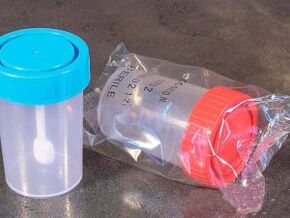Symptoms of parasites in the body can often seem incoherent and unexplained, and although the thought is intimidating, they are more common than many believe. There are many organisms in the world - various types of worms, protozoa that can parasitize almost all of a person's internal organs and cause symptoms of various diseases. You can find out what tests to do for parasites and when to do them in this article.
When do I need to take the test?

Most of the time, infection by parasitic diseases occurs when eating poorly washed vegetables and fruits, poorly processed meats, fish, raw water, as well as through household contact when using common utensils, toys for children.
There are the following types of parasites:
- Protozoa (lamblia, amoeba, malaria plasmodium).
- Parasitic arthropods (Demodex mite, the causative agent of scabies).
- Parasitic worms (helminths).
The most common parasitic diseases are caused by helminths (worms) and occur among young children, pet owners and people at a social disadvantage.
The main characteristic of the parasites is their imperceptible existence in the early stages. For a long time after infection, they do not manifest at all and cause pronounced symptoms already in advanced stages.
You can recognize the presence of parasites in the body by the following manifestations:
- Bloating, gas, constipation, diarrhea, stomach pain, intestines.
- Decreased or increased appetite, discomfort after eating.
- Unmotivated weight loss.
- Itching of the skin, incomprehensible rashes, dermatitis, hives.
- Pale skin, increased fatigue or diagnosed anemia (usually iron deficiency).
- Overwork, sleep disorders (drowsiness, insomnia).
- Teeth grinding while sleeping, prolonged cough.
If these symptoms appear, you should see a general practitioner and test for parasites.
What tests to pass on parasites

There are many studies to identify the presence of parasites (protozoa, arthropods, helminths) in the body.
Since helminthiasis is the most common disease, the best way to test for parasites is to have a stool test.
To conduct a standard study, the patient will need to collect three separate stool samples from different areas of the same portion in a sterile container and deliver the biomaterial to the laboratory as soon as possible. A medical laboratory assistant examines the samples obtained under a microscope and can identify live and egg parasites.
A standard stool study for worm eggs is not always informative. Due to the peculiarities of the parasite's life cycle, in the test sample, instead of eggs or an adult, there may be dead helminths or their fragments, which cannot be used to diagnose the disease.
More informative is the extended stool analysis, which uses the polymerase chain reaction. This technology allows the detection of helminth DNA even if it is dead, in hibernation or only fragments of the organism have entered the material under study.
To tell precisely whether there are parasites in the body or not, the test must be performed at least three times on different days. The accuracy of a single study, according to statistical data, is 50%, while with a triple study, it increases to 99%.
Another analysis, no less important, is the serological reactions - determination of the level of antibodies of the parasite. They can identify acute (IgM) and chronic or delayed (IgG) helminthic invasion. In addition, they can determine infection by parasites that cannot be found in the stool.
Some helminths parasitize in the bile ducts and can also form cysts in the lungs, liver and brain. They can be suspected by the corresponding clinical symptoms and detected by serological tests, X-rays, computed tomography or magnetic resonance imaging, as well as by biopsy.
For the diagnosis of parasitic skin diseases (scabies, demodicosis, certain types of helminths), scraping and skin biopsy, specific tests (iodine) and serological tests are used.
What tests should an adult do for parasites?

Adults are less likely to suffer from helminthiasis, as they follow personal hygiene rules more closely, eat less fruits and vegetables from the garden that have not been washed and also have less contact with street animals during play.
It is necessary to test for helminthiasis in adults in the presence of certain nonspecific complaints (stomach and intestinal pain, prolonged itching of the skin, rash, weakness, fatigue, anemia), for all patients before admission to the hospital, and also regularly aspart of a preventive study for certain categories of workers.
This includes food industry employees, people who work with children (caregivers and babysitters in kindergartens, teachers, heads of sports sections). These people should definitely be tested for enterobiasis and ascariasis.
Hunters and farmers should be screened regularly for trichinosis and strongyloidiasis; it is important for fishermen to have a serological examination to detect opistorchiasis. More information about which tests should be done in this or that case can be obtained from a therapist.
What tests to transmit parasites to a child

Each child must undergo a thorough diagnosis to identify worms and prescribe effective therapy against them before attending kindergarten and primary school (upon admission, after a long break or illness). In addition, in preschool institutions and schools, regular preventive examinations are required to detect helminth infestations in the early stages and prevent their spread.
To diagnose helminthiasis, children should have a general stool analysis, as well as scraping the perianal folds.
Scraping is recognized as the most effective and accurate method for diagnosing enterobiasis (a disease caused by pinworms). During it, before going to the toilet and the toilet of the perineum, a special cotton swab, spatula or small piece of transparent tape is removed from the perianal folds, which is then applied on a glass slide and examined under a microscope. In the presence of a disease, the laboratory assistant will find moth eggs in the test material.
Treatment for parasitic diseases is prescribed by a doctor or pediatrician, in difficult cases - by an infectious disease specialist. In skin lesions (some helminths, with scabies or demodicosis), the therapy is chosen by a dermatologist.
It is important not to delay contact with a specialist if you suspect a parasitic disease, as the delay in treatment can lead to complications for the patient himself, in addition to increasing the risk of transmitting the disease to others.



































